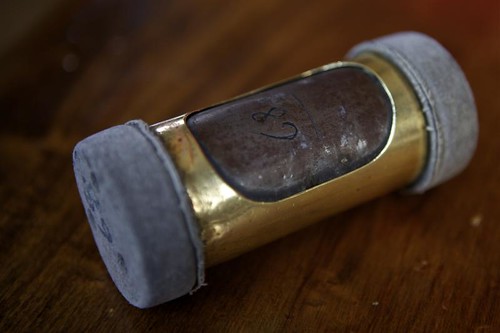Harris has written a historical fictionalised account of events surrounding the Dreyfus Affair, from the perspective of Colonel Georges Picquart, whose tireless investigations led to the ultimate release of Alfred Dreyfus from imprisonment.
A petit taster. Paris, 1896. Colonel Georges Picquart has handed his trusty officer Lauth the infamous cone of torn-up documents without looking at them yet:
He dons his apron, and while he fetches his box of equipment from his cupboard, I empty the paper sack over his desk. Immediately my eye is caught by a sprinkling among the white and grey of several dozen pale blue fragments, like patches of sky on a cloudy day. I poke a couple with my forefinger. They are slightly thicker than normal paper. Lauth picks one up with his tweezers and examines it, turning it back and forth in the beam of his powerful electric lamp.
"A petit bleu," he murmurs, using the slang expression for a pneumatic telegram card. He looks at me and frowns. "The pieces are torn up smaller than usual."
"See what you can do."
It must be four or five hours later that Lauth comes to my office. He is carrying a thin manila folder. He winces with distress as he offers it to me. his whole manner is anxious, uneasy. "I think you ought to look at this," he says.
I open it. Inside lies the petit bleu. he has done a craftsman's job of sticking it back together. The texture reminds me of something that might have been reconstructed by an archaeologist: a fragment of broken glassware, perhaps, or a blue marble tile. it is jagged on the right-hand side, where some of the pieces are missing, and the lines of the tears give it a veined appearance. But the message in French is clear enough.The message implies another officer's guilt and Dreyfus' innocence. The discovery is a pivotal moment in the plot, one that the characters return back to. Harris reconstructs the story from fragments and shards of documents himself, breathing life into that moment. The Evening Standard declares that Harris is committed to the belief that "you can get at a truth as a novelist in a way you can't as a historian - you can bring things alive, the sense of fear, prickly fear, the sweat, the smell of the place and so on".
For those who like the book, apparently the idea came from a lunch with Roman Polanski. So look out for the film soon!
















